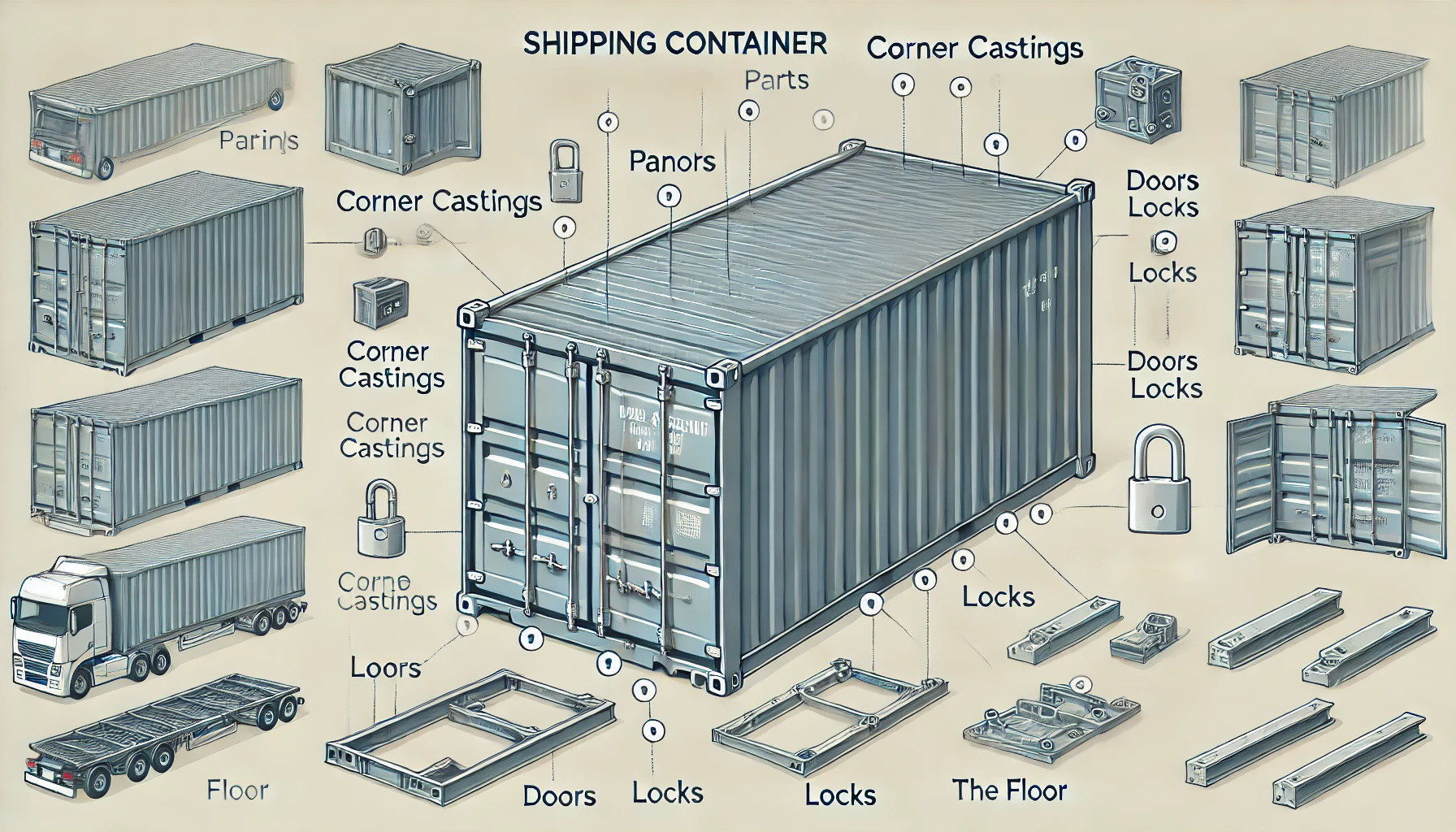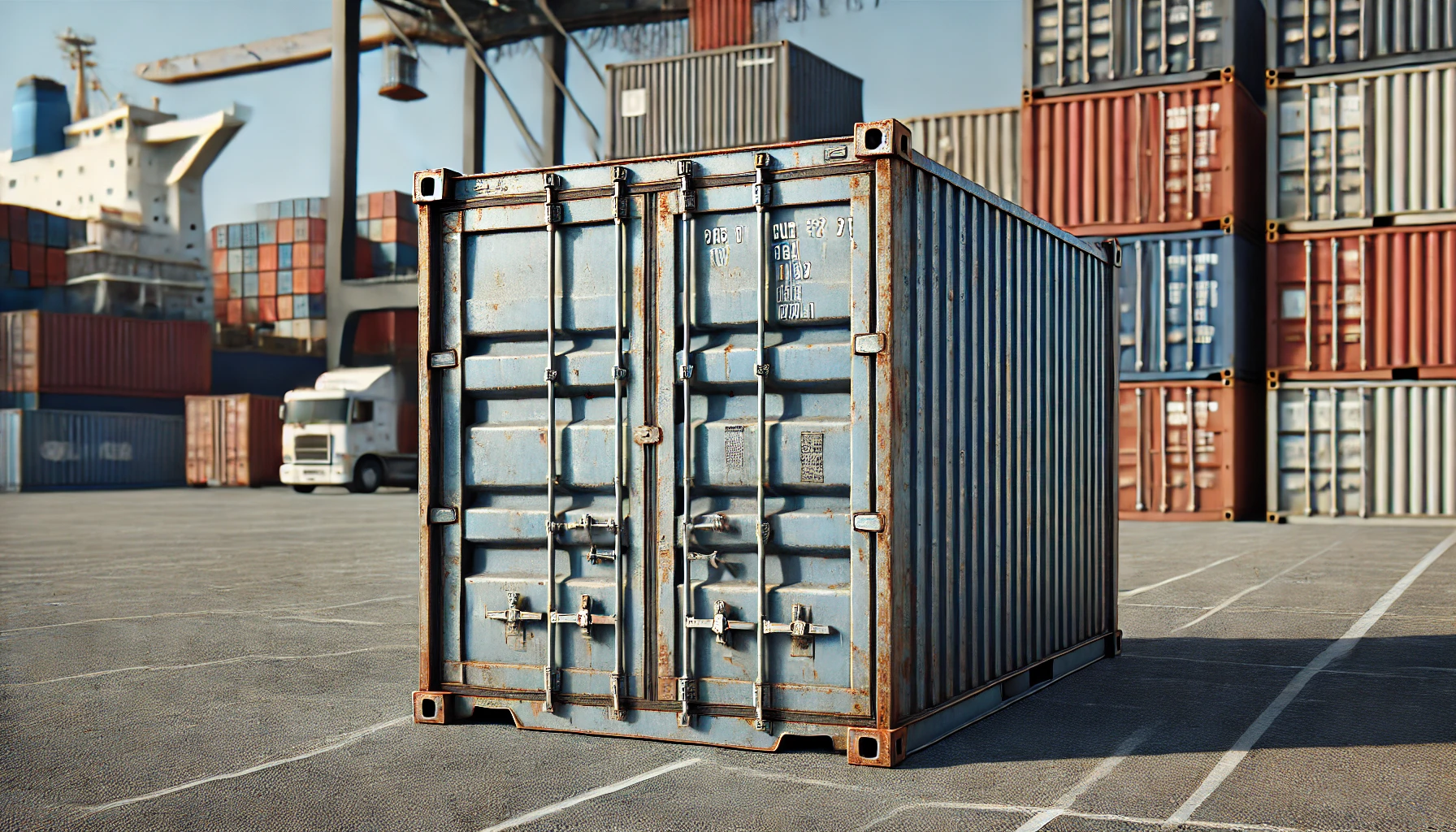
Shipping containers are the backbone of global trade, providing secure and efficient transport for a vast array of goods. However, the functionality and longevity of these containers heavily rely on their individual parts. Understanding these components is crucial for anyone involved in shipping, logistics, or container modification. In this blog, we will explore the essential parts of a shipping container and their significance.

- Container Doors
The doors are one of the most critical parts of a shipping container. They ensure the secure loading and unloading of goods. Typically, shipping containers have double doors at one end, equipped with robust locking mechanisms to prevent unauthorized access and ensure the safety of the cargo. Learn more about our secure locking systems.
- Corner Castings
Corner castings are the reinforced corners of a shipping container, designed for handling and securing the container during transport. They allow containers to be lifted, stacked, and locked into place on trucks, ships, and trains. These corner fittings must adhere to international standards to ensure compatibility and safety.
- Roof Panels
The roof of a shipping container is made from corrugated steel, providing durability and weather resistance. Roof panels protect the cargo from environmental elements and potential damage during transit. Regular inspections and maintenance of the roof can prevent leaks and extend the container’s lifespan.
- Side Walls
Shipping container side walls are also constructed from corrugated steel. They provide structural integrity and protect the contents from external damage. The corrugation adds strength and rigidity, ensuring the container can withstand heavy loads and rough handling.
- Flooring
The flooring of a shipping container is typically made from marine-grade plywood or bamboo, reinforced with steel cross members. This design supports heavy loads and withstands the wear and tear from forklifts and other loading equipment. Some containers feature steel flooring for added durability in specific applications.
- Ventilation
Proper ventilation is essential to prevent condensation and maintain the quality of the cargo. Most shipping containers have vents located near the top of the side walls, allowing air to circulate while keeping out rain and pests. This feature is particularly important for transporting perishable goods and items sensitive to moisture.
- Forklift Pockets
Forklift pockets are slots located at the base of some shipping containers, allowing forklifts to easily lift and move the container. These pockets provide additional handling options, making the container more versatile for various loading and unloading environments.
- CSC Plate
The CSC (Convention for Safe Containers) plate is a safety approval plate that indicates the container has been inspected and meets international safety standards. This plate contains important information, such as the container’s weight, identification number, and date of manufacture, ensuring compliance with global shipping regulations.
Enhancing Container Longevity with Quality Parts
Regular maintenance and timely replacement of worn or damaged parts are essential for maintaining the integrity and functionality of shipping containers. Using high-quality parts from reputable suppliers can significantly extend the lifespan of a container and ensure the safety of the cargo.
At Delta Mark, we offer a wide range of container parts and accessories to meet your shipping needs. From door seals to corner castings, our products are designed to enhance the performance and durability of your containers.
For all your shipping container needs, trust Delta Mark. Our comprehensive range of container parts ensures your cargo is safe and secure throughout its journey. Contact us today to learn more about our products and services, and let us help you keep your containers in top condition.
